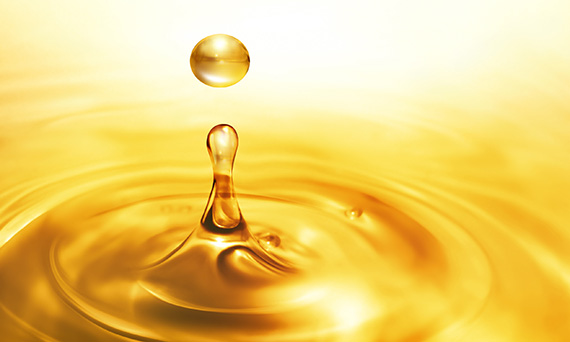The Importance of Hydraulic System Maintenance and Filtration
By Ronald Knecht, Global Business Development Manager Fluid Power, and Peter Skoog, Technical Manager Fluid Power and Grease,
Quaker Chemical Corporation

One of the most important functions for the maintenance of a hydraulic system is proper filtration. Most component failures are the direct result of contaminated hydraulic oil, and the expense of having to replace hydraulic components damaged by contamination is often eclipsed by the even higher cost of unscheduled downtime for the machine.
When it comes to maintaining a hydraulic system, there are a few approaches that can be taken:
- Using a filter system that not only prevents dirt from getting into the system (for example, air filters on the tank), but can also remove dirt from the fluid in the return line or auxiliary loop.
- Choosing the right hydraulic fluid. Most fresh fluids are able to be filtered through fine pore sizes under lab conditions. However, when used in an actual hydraulic system, the performance can be much different when the fluid is exposed to environment-specific pollution and extreme conditions.
Below are some case studies that show where choosing the right hydraulic fluid can make fluid maintenance a lot easier, system performance more reliable, and extend the lifetime of the filter.
Case 1. High water-based hydraulic fluid (HWBHF).
In some extreme operations where fire hazards exist, the hydraulic fluid of choice is a high water-based hydraulic fluid (HWBHF). Forging and longwall mining are examples of applications where this fluid type is widely used. For these applications, there are two different types of HWBHF typically supplied as a concentrate and diluted at the customer site to a 2% concentration:
- Fluids containing mineral oil that result in a milky or micro emulsion 2-5% concentration in local water.
- Fully synthetic fluids that leave a fully transparent solution at 2-3% concentration in local water.
The effect on filtration between these two fluids can be huge. The classic mineral oil containing fluids have a tendency to coagulate with dirt or coal particles to form greasy cake particles, as well as a tendency to grow bacteria and buildup of greasy lumps resulting from interaction with water hardness.
This can present issues for a coal mining operation where the requirements for fluid cleanliness are increasing, and improper filtration can corrode and plug filters, as well as shorten the expected lifetime for valves and cylinders.
These potential issues could be avoided with the use of a fully synthetic solution. The fully synthetic solution is transparent as water and shows better dirt rejection (i.e., no cake formation), which improves the ease of filtration and lifetime of the filters considerably. Practical experience shows that with β5 > 1000 filters, the fluid cleanliness could easily be improved to a cleanliness of ISO 4406 -/14/11 or better.
Case 2. Medium water containing fluids.
Water glycol hydraulic fluids (HFC) are true solutions composed of soft or deionized water, a polyglycol thickener, glycol and an amine-based additive package. Being a true solution, it is virtually impossible to remove major fluid components and additives with standard filtration. Water glycol fluids can be filtered down to 3 microns absolute (β3 > 1000) without damaging the fluid. Because HFC fluids rely on an alkaline pH (water glycols typically have a pH > 9.0) to inhibit rust, filter media must be compatible with alkaline water solutions.
Synthetic media like fiberglass is preferred. If cellulosic media (paper) is used, it has to be resin impregnated to fix the filter’s pore size. Untreated cellulose or paper filter media will swell in the presence of water. The swelling shrinks the pore size and may give the indication that the filter is plugged when, in fact, the filter media is not compatible with the hydraulic fluid.
Case 3. Water-free hydraulic fluids.
These fluid types comprise the standard mineral oil hydraulic fluids, as well as several water-free type fire resistant hydraulic fluids and bio-hydraulic fluids.
Typically, they are designed to be able to withstand extreme conditions such as high pressures, shear rate and temperatures, as well as have a long lifetime in the hydraulic units.
The trends in hydraulics today include:
- Less leakage and smaller systems, thus higher demand on the fluid
- Higher pressures and faster switching, thus higher demand on components
Both of these trends bring high demands on the used hydraulic fluid when it comes to cleanliness. The reduction in leakage results in a demand of longer fluid life, and fluid life is among others heavily impacted by filtration. Major initiators for fluid aging are small metal particles and dirt. The better they are filtered out, the slower the aging process.
This filtration process becomes more important the longer the fluid stays in the system, particularly the removal of by-products from the aging fluid, which in some cases are not completely soluble in the fluid or become insoluble when the fluid cools down during a production stop (varnish). For instance, it is known that Mineral Oil type I hydraulic fluids have different sludge formation than type II and III oils (the aging by-products are less soluble in the type II and III oils).
The sludge formed can have a negative impact not only on fluid life, but also on component life and system accuracy. The tendency for these by-products to form depend highly on the operating conditions, and the fluid type in use.
When it comes to hydraulic systems, it is important to not only spend time to choose the correct hydraulic fluid, but to also implement proper filtration to keep your hydraulic system at peak performance.